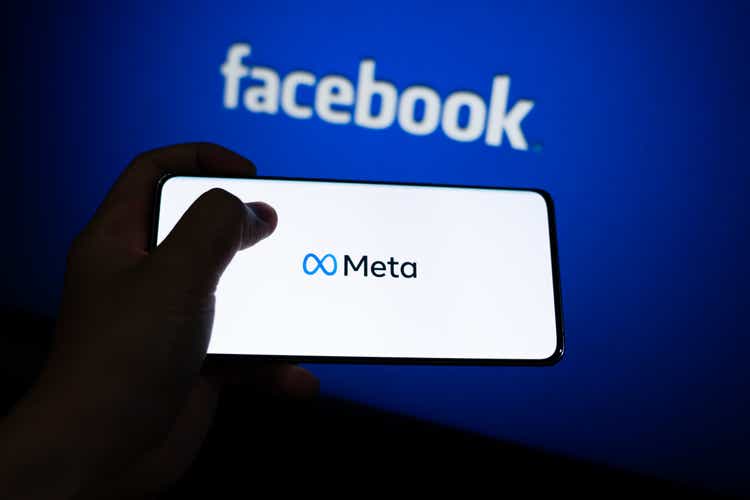Fritz Jorgensen
Meta Platforms (NASDAQ:META) is a sell and faces some difficult hurdles. The company’s attempted pivot to the Metaverse with virtual and augmented reality (VR/AR) seems unlikely to be successful. Meta appears to be overcharging potential developers to utilize its platform, causing limited uptake. In addition, the core Facebook business is having difficulty adjusting to Apple’s (AAPL) new privacy rules.
The Apple changes amounted to an estimated $10 billion in headwinds for FY2022. Profits have fallen, and the company has implemented a hiring freeze. We believe that Meta has a strategic misalignment, focusing too heavily on the Metaverse while ignoring its bread-and-butter advertising business, which needs a major revamp given Apple’s new privacy rules.
|
Meta Platforms |
E2022 |
E2023 |
E2024 |
|
Price-to-Sales |
3.6 |
3.2 |
2.8 |
|
Price-to-Earnings |
16.6 |
15.3 |
14.6 |
|
EV/EBITDA |
7.8 |
7.2 |
6.8 |
Factors
Meta’s revenue driver has always been its digital advertising, with nearly 3 billion daily active users raking nearly $10 each in quarterly ARPU in FY2021. However, the cracks showed heavily when Apple announced its intent to reduce the amount of personal data companies like Meta could collect on its operating system, with Alphabet’s (GOOG) (GOOGL) Android announcing a similar program not soon after. This dropped quarterly ARPU to $7.91 in 1H22 despite reporting an increase in users and advertising impressions. It is unlikely to ever return to the highs of 4Q21, with the European Digital Markets Act (DMA) and American antitrust probes remaining a looming threat.
To cut costs, Meta implemented a hiring freeze just after 1Q22. In 2Q22, Meta did allocate far more money into reforming its algorithm during the massive R&D hike, so it can build out its advertising system once again while using less personalized data. However, during the conference call, the (now former as of August 1st) Chief Operating Officer confirmed that the transfer to that low-data method of capturing advertising value is still in very early stages. Only around 15% of content you see on your Facebook or Instagram feed is curated by an algorithm, with the rest coming from people you already interact with and follow. That 15% is where Meta makes their money, by showing you sponsored content.
Meta has already spent 16 billion in 2022 (increasing 43%) on research and development, with a significant chunk of it going to its Reality Labs segment, who manages the Metaverse. This has received relatively positive attention with the push toward work-from-home, but existing virtual reality experiences can’t really nail a value proposition beyond novelty, making us pessimistic that Meta will be any different.
While the hiring freeze cannot exactly be priced into the headwinds and costs, it is difficult to ignore the amount of talent poaching that would have been required to succeed with the Metaverse and the repositioning of advertising toward low-data, let alone the stock-based compensation traditionally given out now being significantly reduced in value.
Presently, Meta charges a reported 47.5% fee on creators selling products or services within the Metaverse platform, but still only allows hand-selected creators to use the sales platform. So far, only 10,000 “Metaverses” have been created with only 300,000 monthly active users as reported by The Verge in February.
Given that this platform has a high barrier for entry, requiring a Quest VR headset (starting at just over $400), and no way to presently make money – it is a vision and risk that may be simply too much for the current capacity of Meta.


Be the first to comment